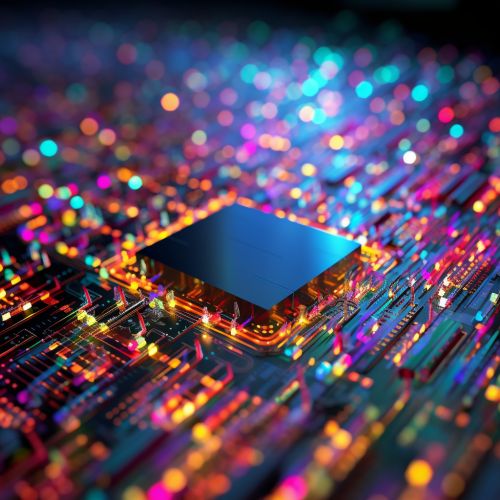The Role of Quantum Dots in Next-Generation Displays
Introduction
Quantum dots (QDs) are nanoscale semiconductor particles that have unique optical and electronic properties due to their size and highly tunable nature. The use of quantum dots in next-generation displays is a rapidly evolving field of research and development, offering potential for significant improvements in color accuracy, energy efficiency, and viewing angles compared to traditional display technologies.


Properties of Quantum Dots
Quantum dots possess several properties that make them ideal for use in display technologies. These include their size-dependent emission properties, high quantum yield, and wide spectral range. The size-dependent emission properties of quantum dots allow for the precise tuning of the emitted light's color. By adjusting the size of the quantum dots, manufacturers can control the wavelength of the emitted light, thereby controlling the color. This property is particularly useful in display technologies, where accurate color representation is crucial.
Quantum Dot Displays
Quantum dot displays are a type of display technology that utilizes quantum dots to produce light. These displays can be divided into two main types: Quantum Dot Light Emitting Diode (QLED) displays and Quantum Dot Color Filter (QDCF) displays.
Quantum Dot Light Emitting Diode (QLED) Displays
QLED displays are a type of quantum dot display that uses quantum dots as the light-emitting material. In a QLED display, quantum dots are used in the emissive layer of the display, which emits light when an electric current is applied. This type of display offers several advantages over traditional display technologies, including higher brightness, improved color accuracy, and better energy efficiency.
Quantum Dot Color Filter (QDCF) Displays
QDCF displays, on the other hand, use quantum dots as a color conversion layer. In a QDCF display, the quantum dots are used to convert the light emitted by a blue LED backlight into red and green light. This type of display offers the potential for even greater color accuracy than QLED displays, as it allows for the precise tuning of the color of the emitted light.
Advantages of Quantum Dot Displays
Quantum dot displays offer several advantages over traditional display technologies. These include improved color accuracy, higher brightness, better energy efficiency, and wider viewing angles. The improved color accuracy of quantum dot displays is due to the precise tuning of the color of the emitted light that is possible with quantum dots. This allows for the display of a wider color gamut than is possible with traditional display technologies.
The higher brightness of quantum dot displays is due to the high quantum yield of quantum dots. Quantum yield is a measure of a material's efficiency at converting absorbed light into emitted light. Quantum dots have a high quantum yield, meaning they are very efficient at converting absorbed light into emitted light. This results in a brighter display.
Quantum dot displays are also more energy efficient than traditional display technologies. This is because quantum dots convert light into color more efficiently, resulting in less wasted energy. Finally, quantum dot displays offer wider viewing angles than traditional display technologies. This is because the light emitted by quantum dots is not polarized, meaning it can be viewed from a wider range of angles without a loss of color accuracy or brightness.
Challenges and Future Directions
Despite the many advantages of quantum dot displays, there are also several challenges that must be overcome before they can be widely adopted. These include the need for improved quantum dot stability, the need for environmentally friendly quantum dot synthesis methods, and the need for cost-effective manufacturing processes.
Looking forward, the use of quantum dots in next-generation displays is a promising area of research and development. With continued advancements in quantum dot technology, it is likely that we will see an increasing number of devices utilizing quantum dot displays in the future.
